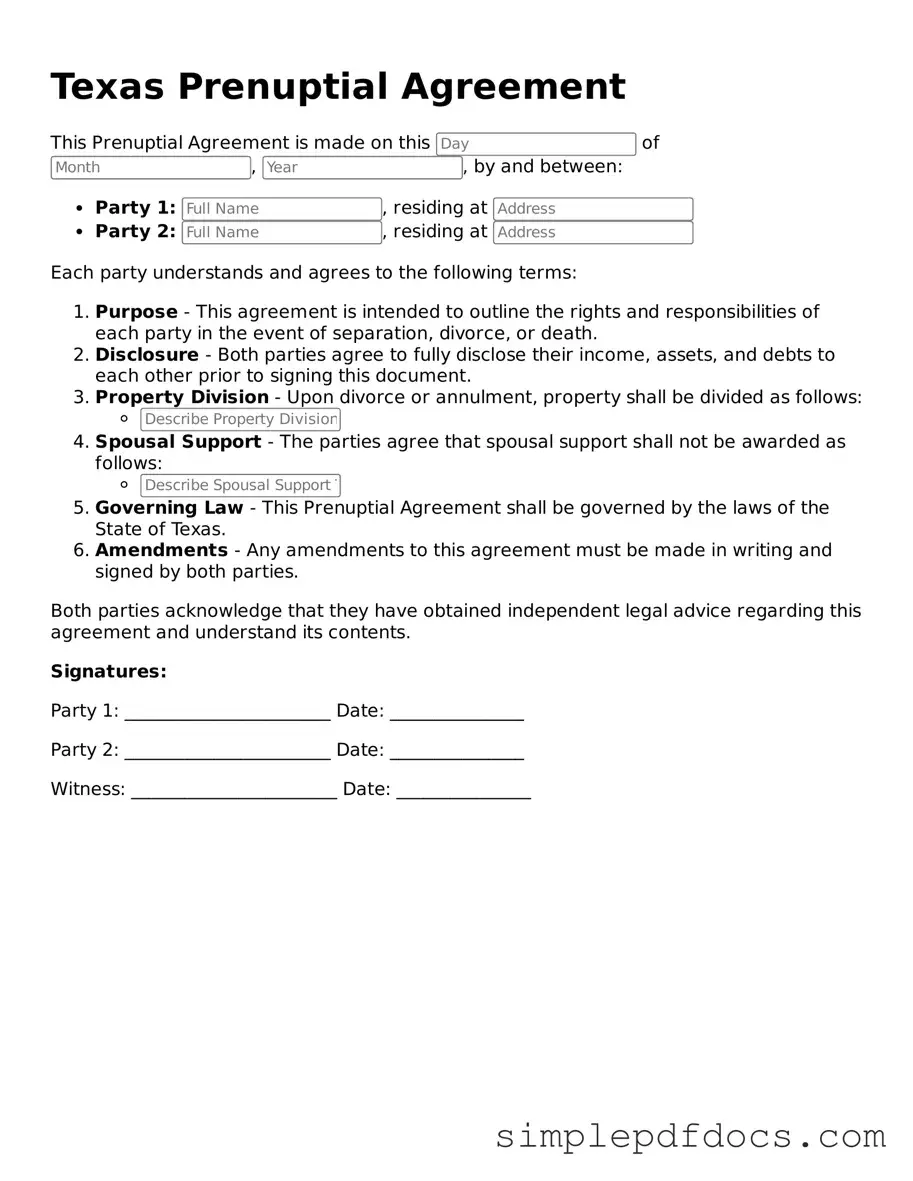A Texas prenuptial agreement serves as a vital tool for couples planning to marry, allowing them to outline their financial arrangements and expectations before tying the knot. This legal document can address a range of important issues, including the division of property, spousal support, and debt responsibility in the event of divorce or separation. By establishing clear terms, both parties can protect their individual assets and minimize potential conflicts down the road. The agreement must be in writing and signed by both parties to be enforceable, ensuring that each partner's rights are respected. Additionally, it is crucial that both individuals fully disclose their financial situations during the drafting process to uphold the agreement's validity. As relationships evolve, couples may also wish to revisit and amend their prenuptial agreements to reflect changes in circumstances, making it a flexible option for financial planning. Understanding the intricacies of the Texas prenuptial agreement form is essential for anyone considering marriage in the state.
